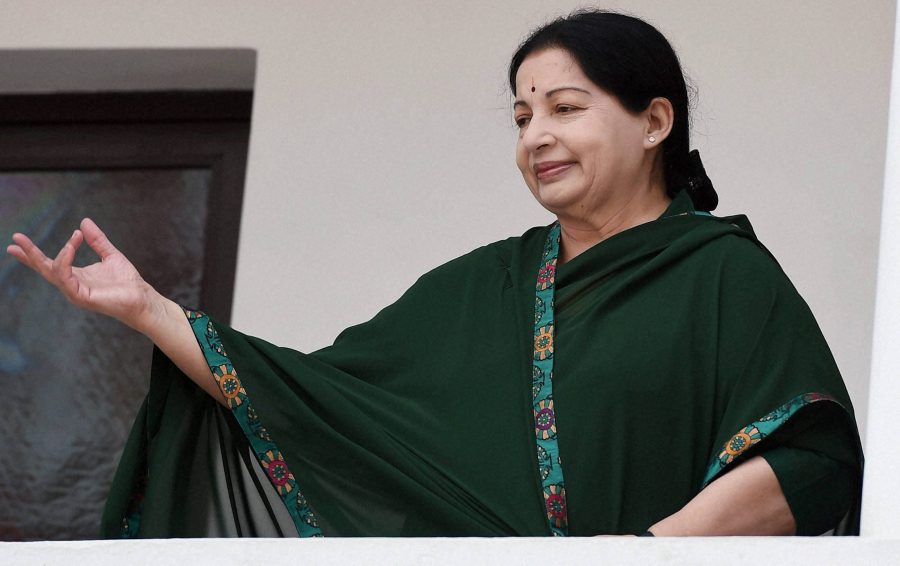
Parties do precious little to give women decisive roles

Tamil Nadu has reason to be proud of its progressive label. Noted psephologists Prannoy Roy and Dorab R Sopariwala, charting the participation of women voters down the years in the country, say, “…among the bigger states, those which have the best record, with the lowest under-representation of women, are from the south of India: Tamil Nadu and Andhra Pradesh…” (The Verdict, Decoding India’s Elections).
In a way, it may be said that the two neighbouring states have held on to their advantage of having been part of the Madras Presidency during the colonial days. The situation in AP (and the new-born Telangana) now is open to debate but Tamil women have made some strides, the Dravidian movement playing a big part in the process. How far has it really taken them, is the question.
“Let the women throw away the ladle and take up books instead,” Periyar EV Ramasamy, the celebrated founder of the movement, would say, and he often excoriated the subjugation of women, even the institution of marriage. His followers now pat themselves on their backs, citing women voter participation. But does the empowerment go beyond the ink on the forefinger? Where do women find themselves in the top echelons?
Meagre number
As of now, there are 22 women MLAs in the 235-member House, which is less than 10%. In the Lok Sabha, there are four women out of 40 and two out of 18 in the Rajya Sabha. Their presence in local bodies is pathetic, despite mandatory reservation. Few make it to the top in political parties. One shouldn’t make too much of the late Tamil Nadu chief minister’s Jayalalithaa’s success. She captured the AIADMK only because of her proximity to MGR and was projected by him as his successor, even though tentatively.
Well, she broke many an obstacle and took sweet revenge on the dominant male segment, but her legacy on women empowerment is lackluster. Not only was she quite conservative in her outlook but also did little to advance the cause of fellow women. When she stormed into power in 1991, there were as many as 26 women candidates, a record of sorts, and 25 of them won. As a person who was covering the Assembly then, I can vouch for their sycophancy within the House, apart from the total indifference to any issues of major concern. Apparently, they were indifferent to their own electorate too. Only eight of them were fielded again in 1996 — all of them lost, including Jayalalithaa herself. Subsequently, the number remained modest.
Another woman to wield almost untrammelled power during the Jaya regime was Sasikala, her confidante. When it comes to the DMK, Kanimozhi owes the little prominence allowed to her by MK Stalin to the fact that she is the daughter of the patriarch, who incidentally took some time to acknowledge he had one more wife apart from the legally wedded one and sired a daughter in that relationship. And the daughter, seen by many as quite accomplished, has had to resort to a some manoeuvres to assure the crown prince that she was not planning to challenge his leadership. Not trustful anyway, Stalin is grooming his son Udhayanidhi.
Barring Kanimozhi, there is no one of consequence in the leadership. A couple who threatened to emerge were promptly squelched by none other than Kanimozhi herself! One can go on and on, but what did the Dravidian pitamaha, Periyar, achieve on the women front?
Uninspiring past
The Congress made a virtue of tokenism and sought to show off a few women here and there as a great triumph of its empowerment mission. It, too, was wary of upsetting the feudal order. Only those few women who could wriggle out of the patriarchy without making much noise would rise in the Congress ranks.
Unlike the grand old national party, Periyar didn’t have to make any compromise with the status quo, yet he unfortunately did. Perhaps marrying a girl several years younger to him can be explained by some convoluted logic, but the bitter fact is that there were a few women who were in the vanguard in his Self-Respect Movement who morphed into the Dravidar Kazhagam (DK). Whoever owed their standing to their spouses and parents. Some names can be mentioned, of course, but the exceptions would only go to prove the rule.
Worse, it was well known that the women in non-brahmin households tended to be more cabined and confined than their upper caste counterparts — it holds good to this day. But Periyar chose not to make too much of an issue of this sorry state, except for his platform rhetoric. His wife, Maniyammai, immensely enjoyed the power she derived from her station and operated a cabal of her own, with little objection from EVR. Toady, if K Veeramani has the DK and its vast resources at his command, it is essentially due to his having been part of the Maniyammai clique.
Thus, the past has not been too inspiring and the journey since Independence leaves a lot to be desired. We are all left to hope, like Wilkins Micawber from Charles Dickens’ ‘David Copperfield’ that ‘something will turn up.’

